Indian Culture and Social Work: Opportunities and Considerations
VerifiedAdded on 2023/06/18
|9
|406
|61
Presentation
AI Summary
This presentation provides an introduction to social work in India, emphasizing its scope encompassing individuals, families, groups, and communities with the goal of improving social functioning and overall well-being. It highlights that while social work education has been present in India for 80 years, it's still striving for full professional recognition by key entities like the government. The presentation also underscores the significance of Indian culture, noting its vastness and diversity across 28 states and 8 union territories, each with unique cultural identities. Key aspects of Indian culture discussed include the tradition of joint families, where extended family members live together under the leadership of the eldest male, and the influence of local culture, geography, and climate on traditional attire. In conclusion, the presentation emphasizes the variety of social work opportunities presented by Indian culture, which is defined by a multitude of cultural practices including those of Hindus, Muslims, and Christians.
1 out of 9
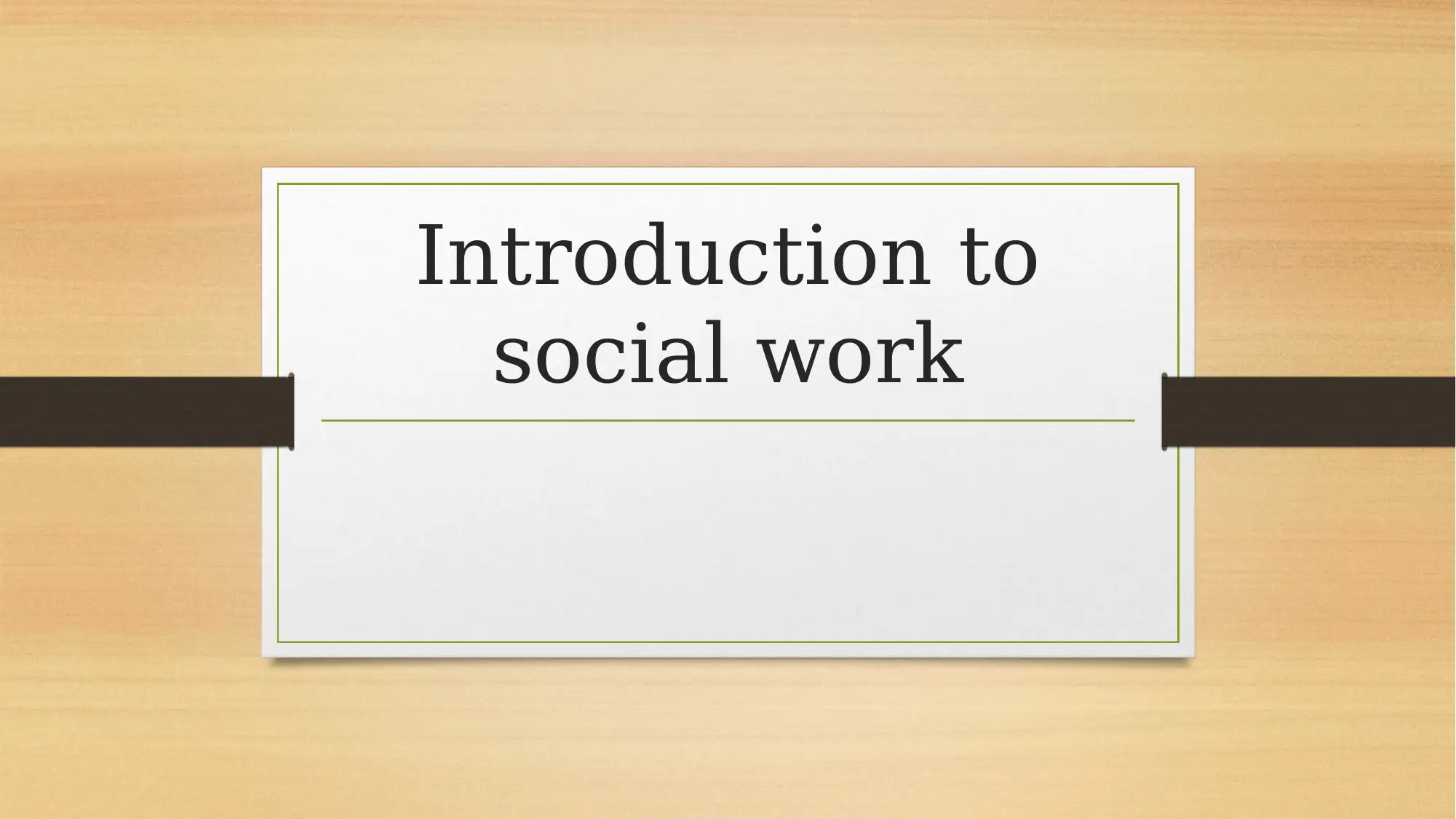
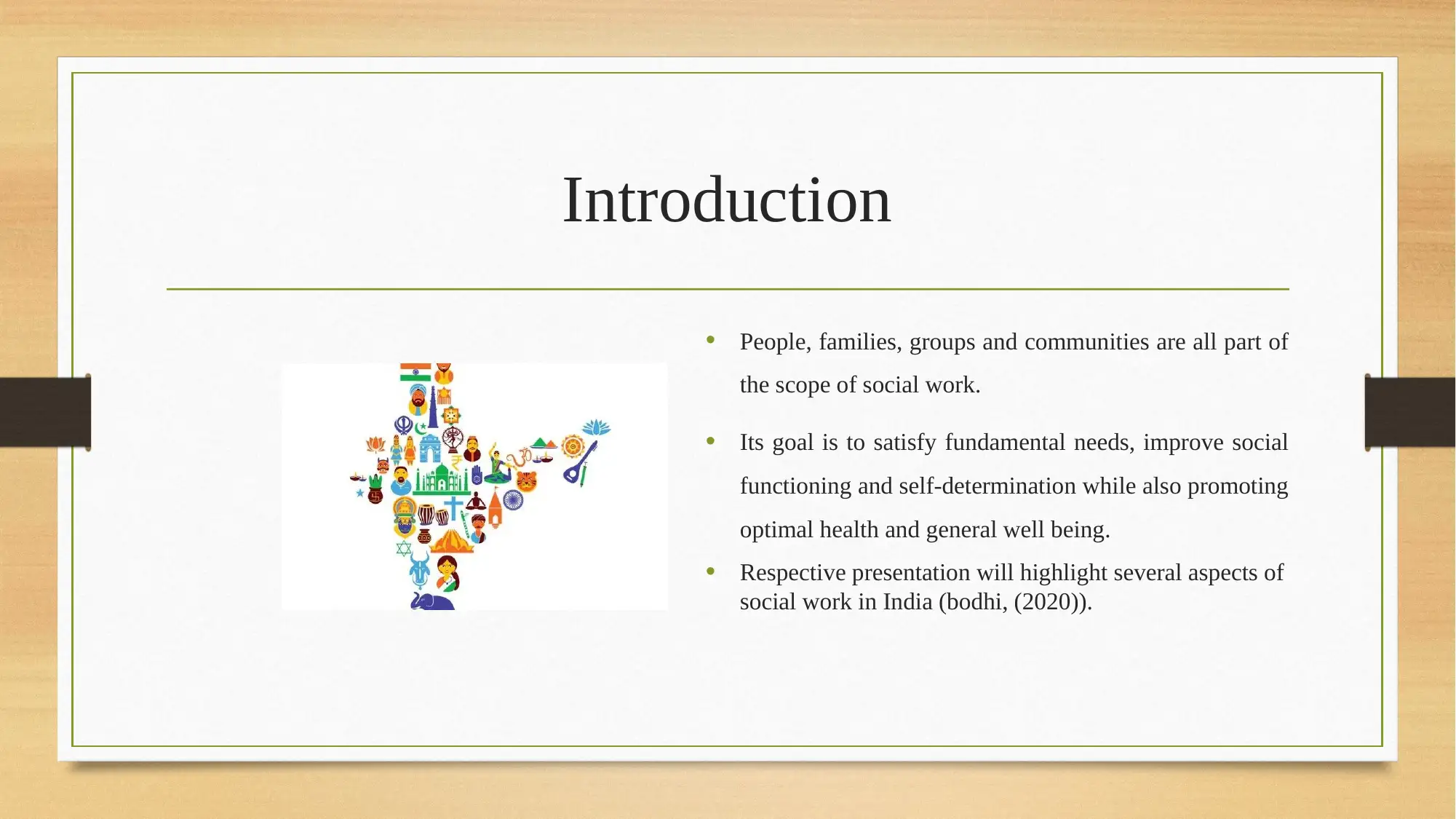
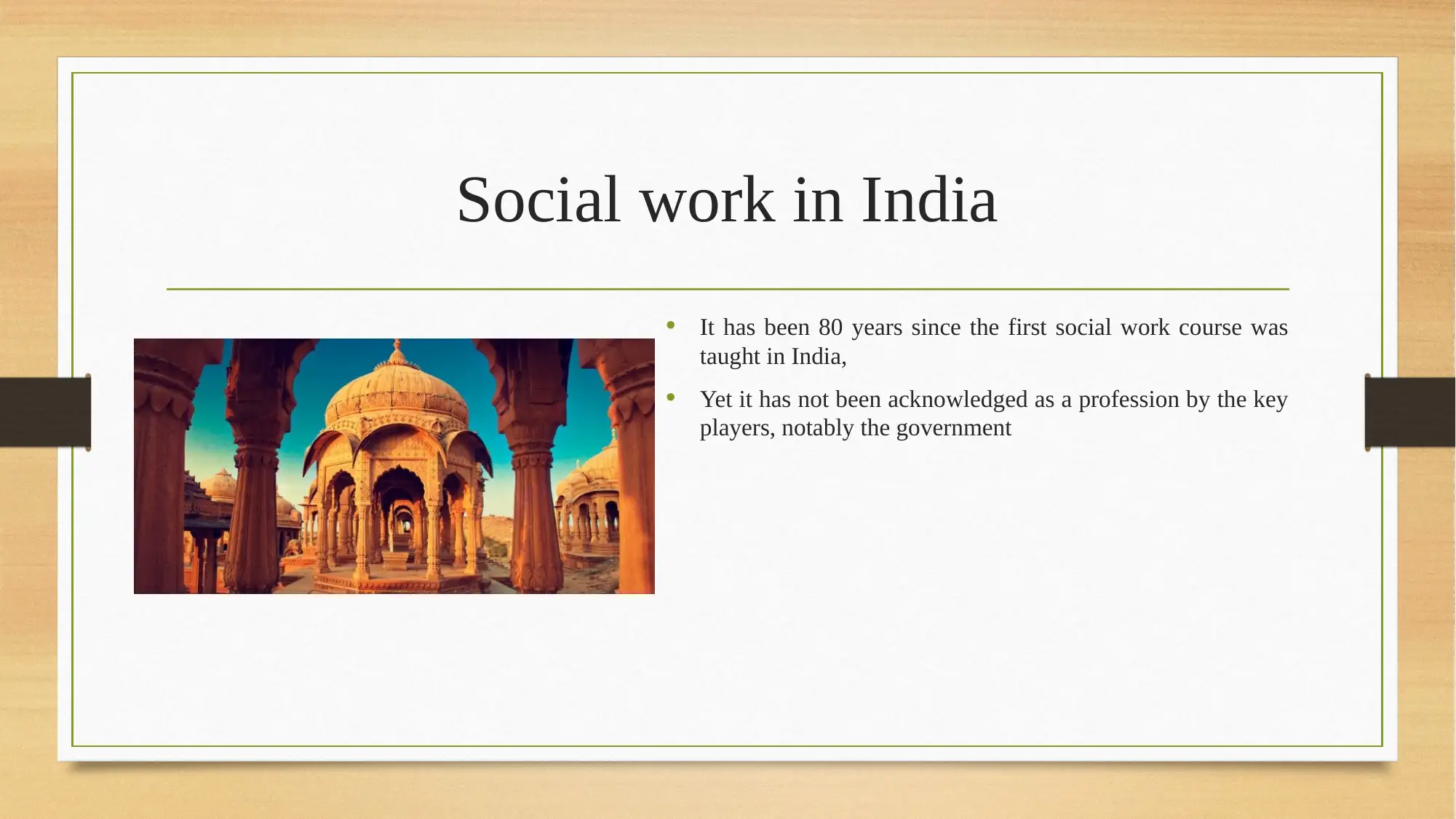

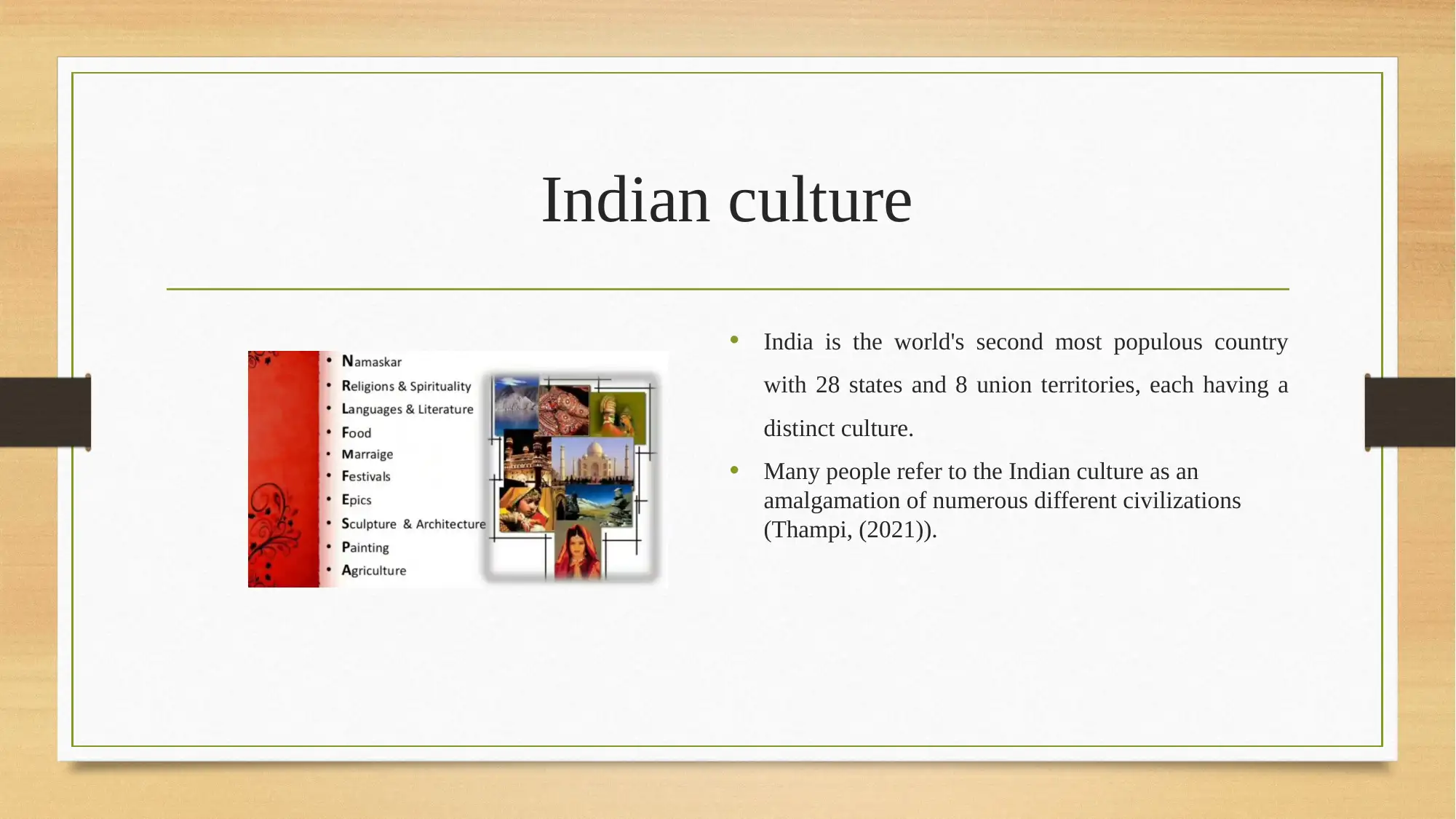
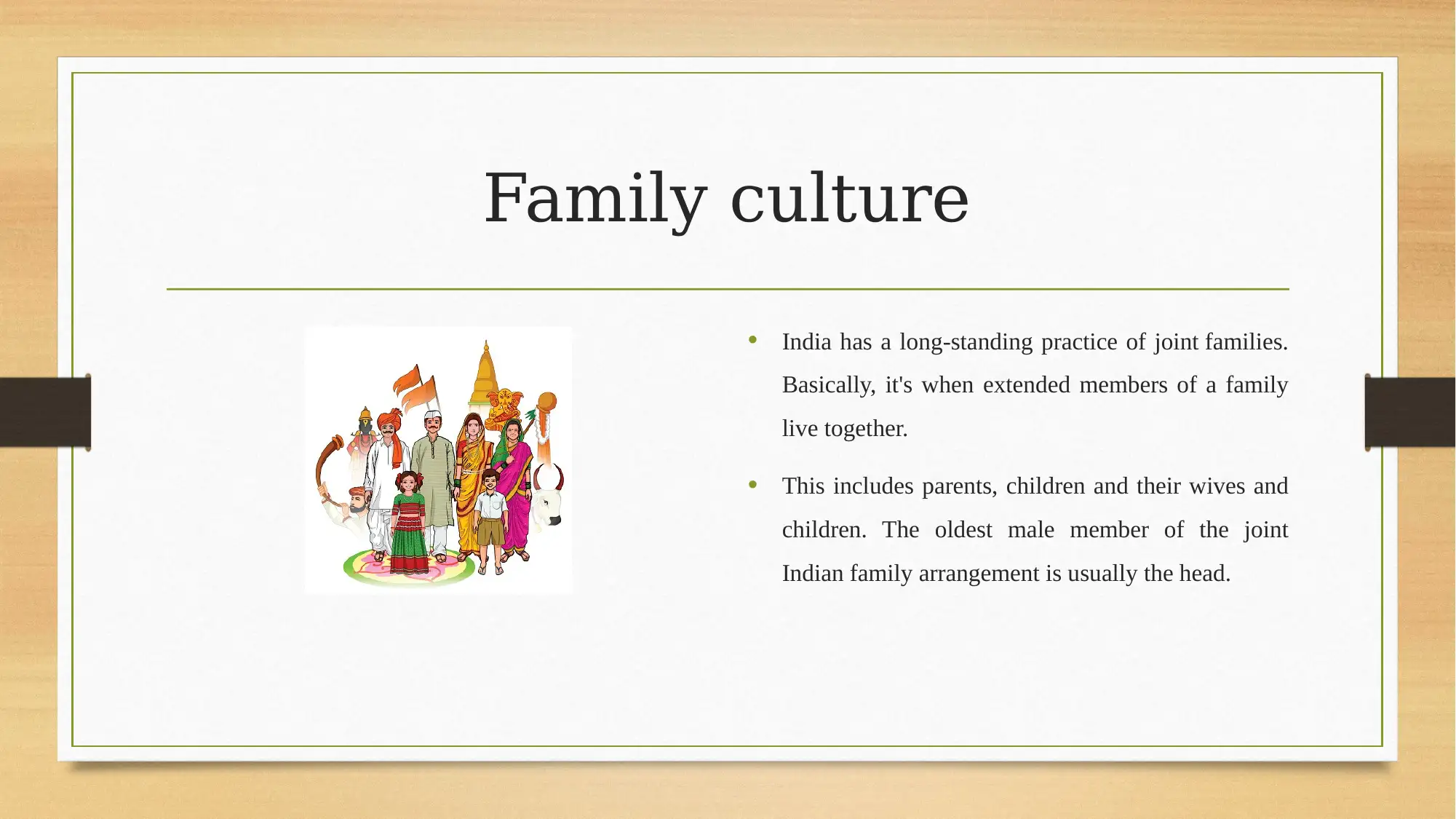
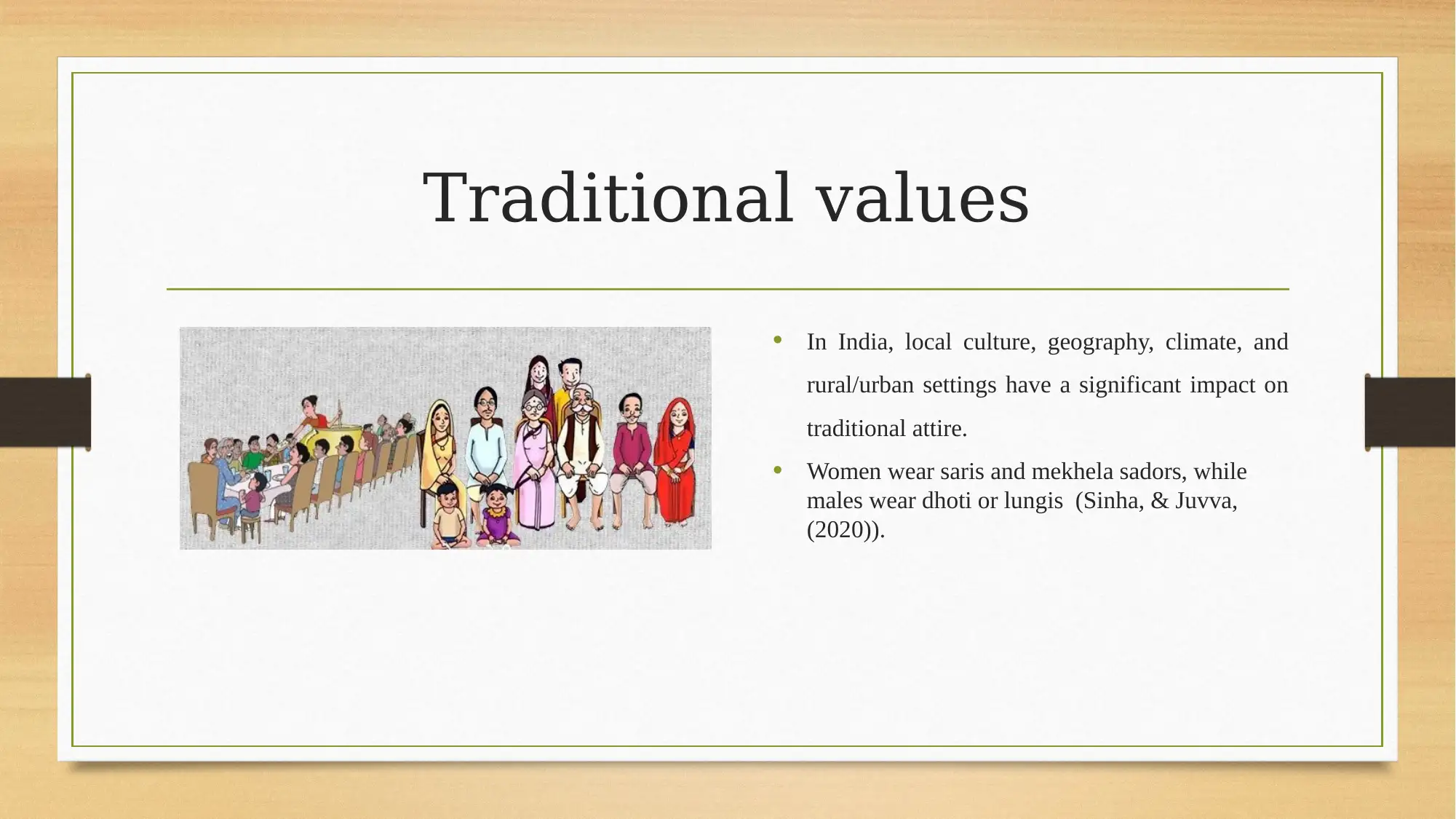
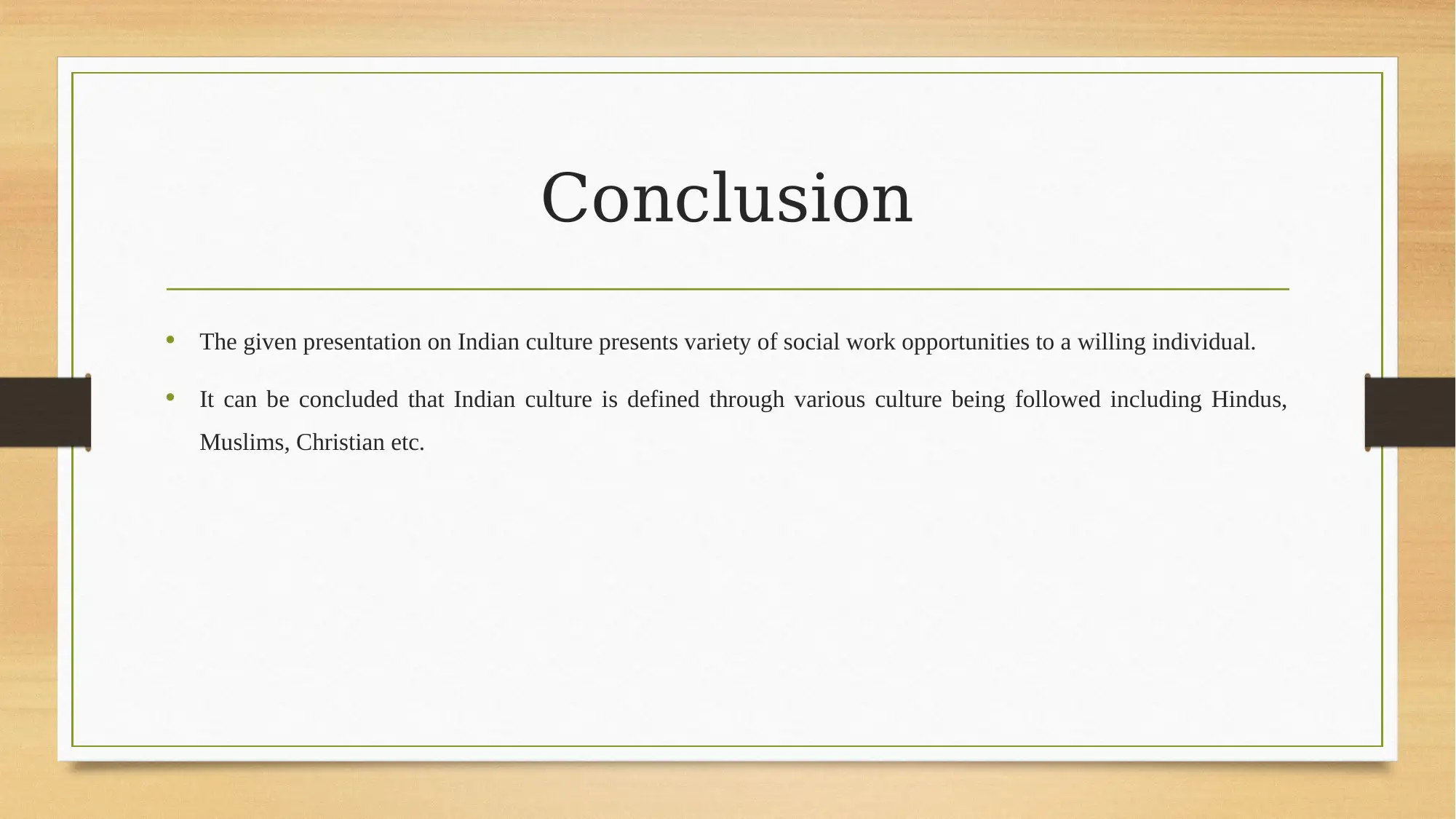
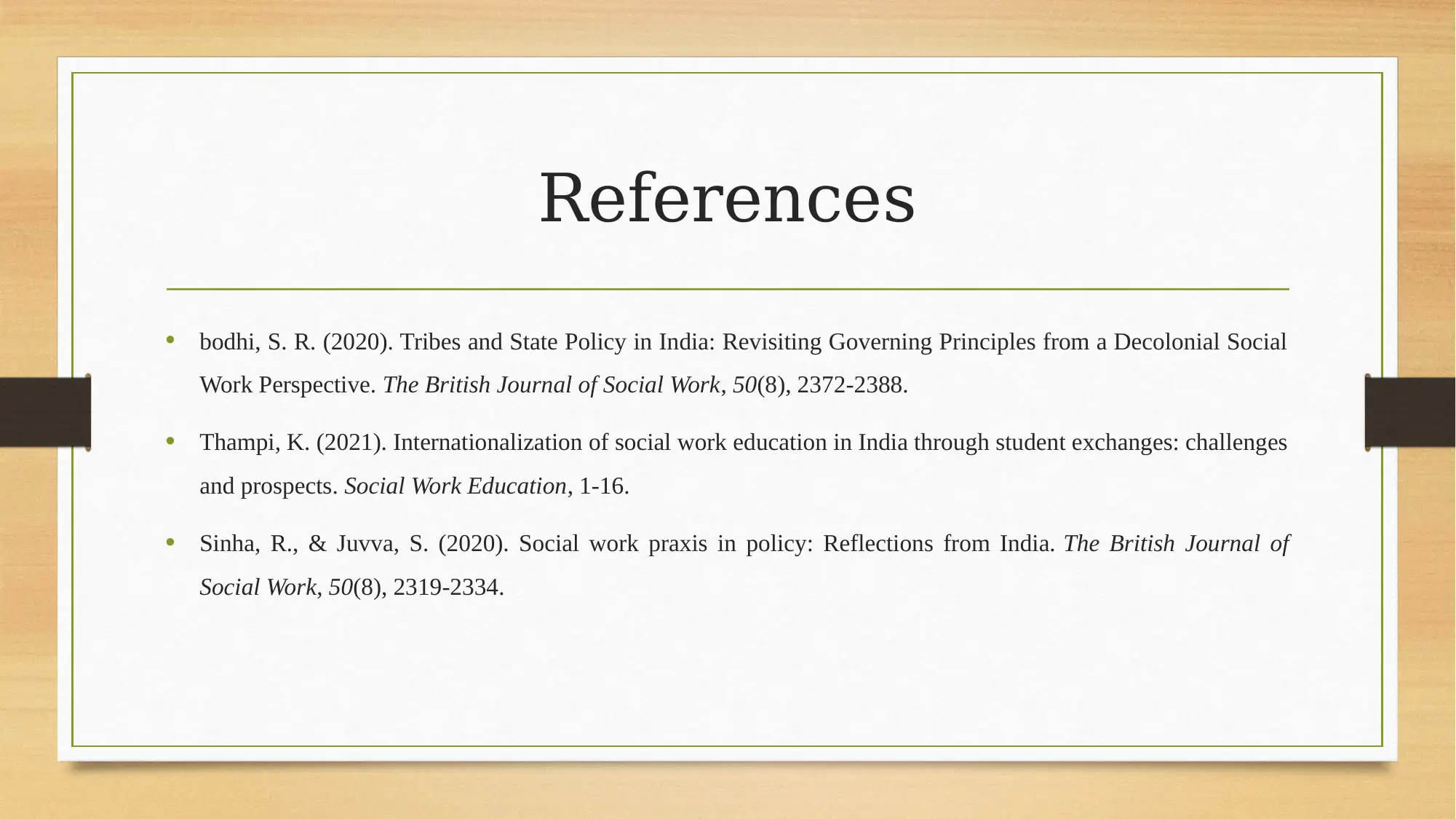



![[object Object]](/_next/static/media/star-bottom.7253800d.svg)